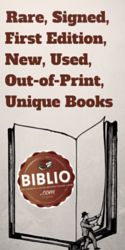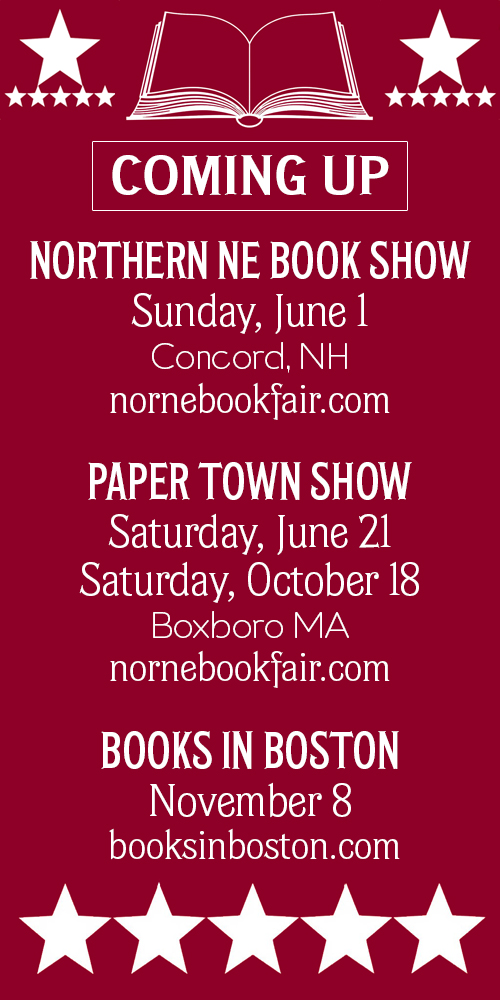A Day in Canterbury: Morning
It would have been delightful to arrive in Canterbury on horseback, like the Knight, “the verray parfit gentil Knight”, in Chaucer's Canterbury Tales. I could easily see myself cantering along the springy turf of the Pilgrims' Way, clattering down Watling Street and Mercery Lane, spurring my horse through the Christ Church Gate and trotting into the hallowed precincts of the cathedral itself. And I would have had the joy of entitling this piece Cantering into Canterbury.
The reality is that Simone and I, lacking horses, have arrived in Canterbury by train. Which is not a bad deal. Canterbury West station is within easy walking distance to the city centre, and we pass by the ancient tower of the Westgate, detouring for a while to walk beside the River Stour, through the delightful Westgate Gardens. I know my way around Canterbury. For me, this is a sentimental journey, a visit to old haunts, the city where, for four years of my youth, I attended The King's School. I want to show it to Simone, and share with her some of its history, and some of mine.
How happy I am that the sun is shining and that St. Dunstan's and St. Peter's Streets, which lead us to the centre, are now reserved for pedestrians. As we cross the river by the Weavers, I point out to Simone the Ducking Stool. In the good old days, any wise woman suspected of being a witch was strapped to it and then dunked in the water. If she drowned, she was clearly innocent; if she didn’t, she obviously had magic powers and was a witch: so she was unstrapped, dried out and carted off to be burned at the stake. Tough justice. But perhaps less tough than in Germany, where, Simone tells me, women deemed to be witches were summarily burned, without any preliminary trial by water-boarding.
We enter The King's School by the Mint Yard Gate. The affable porter checks my alleged status as a former pupil against a list of names in a bulky file. “There are a lot of Marshalls in here,” he says. “Mostly my brothers and sisters,” I say. Satisfied with my bona fides, he waves us through. We stand in the Green Court, the magnificent, almost circular lawn which is the heart of the school and the heart of the Precincts: behind us, the Norman staircase, leading to the school library; in front of us, the cathedral, in all its glory. I am still awed by the beauty of this place.
The buildings of school and church are closely entwined, just as their histories are entwined. The King's School, allegedly, has its origins in the church school established in Canterbury by St. Augustine in or around 597AD, when he arrived in Kent, on instructions from Pope Gregory, to convert the inhabitants to Christianity. (It was our wit, as schoolboys, to claim that the school's plumbing, bedding and catering had not advanced much since the sixth century, either.) In fact, the present school was created, or re-created, as “The King's School” by Royal Charter in 1541. The king in question is therefore the lovable serial polygamist, and murderer, King Henry VIII.
One of his gracious acts was to have the monastery attached to the cathedral destroyed: or partly destroyed. The ruins are still standing. Simone and I walk past them, on our way to inspect the ancient house, Meister Omers (built in the fifteenth century) where I lived as a boarder. The house is named after Meister (Mr.) Omer, who, in or around 1265, was the owner of a hostel for pilgrims on this site. It was conveniently situated for the purpose, standing a mere fifty metres from the east end of the cathedral. The new building received some notable visitors: King Edward IV convened a parliament here in 1470, Queen Elizabeth 1 stayed here in 1573, and Cardinal Coligny died here in 1568 “in suspicious circumstances”. (No mystery at all: he obviously ate a standard school dinner.) It was a privilege for me to live and study, amongst such old stones, so rich in history.
The King's School has had some distinguished pupils. Most notably, playwright Christopher Marlowe (1564 - 1593) who wrote, inter alia, The Tragical History of Doctor Faustus. This is the play which celebrates the beauty of Helen of Troy, as Faustus asks, in wonderment:
Was this the face which launched a thousand ships
And burnt the topless towers of Ilium?
Answer: yes, actually. Some women just have the knack of making men do heroic and dangerous (and sometimes stupid) things. Faustus goes on: “Sweet Helen, make me immortal with a kiss.” Which she does. And he responds with a glorious love song. Marlowe was a brilliant lyric poet.
This proves that, in his spare time, Christopher Marlowe, like many others, was also William Shakespeare. That is, after he had conceived the cunning plan of getting himself “murdered” aged 29 in a London tavern and then going underground as a literary mole. Interesting fellow. An atheist too, most probably, if indeed he was not actually a double agent working secretly for the papists. High time that Dan Brown wrote a book about him, and about the enduring conspiracy which would have us believe that – perish the thought! - William Shakespeare was William Shakespeare. I look forward to Dan spilling the beans.
William Harvey (1578 - 1657) spilled the beans about a medical mystery: he was the first person to demonstrate that blood circulates around the body. Being a King's School boy, he was able to report this in fluent Latin: his Exercitatio Anatomica de Motu Cordis et Sanguinis (1628) is a landmark in the history of science. A new book about him and his work, by Thomas Wright sits on my shelves, awaiting its moment: Circulation: William Harvey's Revolutionary Idea (Chatto and Windus 2012). More immediately to my taste, perhaps, would be Prudence Leith-Ross's book: The John Tradescants (Peter Owen, 1984), which tells the story of the father and son, distinguished botanists and plant-hunters, who brought many exotic plants to English gardens in the seventeenth century. A whole genus of plants, Tradescantia, is named in their honour. The son, John Tradescant the Younger (1608 – 1662), was a pupil at The King's School. Wandering around the school grounds, I am disappointed not to see any Tradescantias tucked away in convenient corners. But my school was always a bit diffident about honouring its scientists, preferring instead to lionize its literary offspring.
Walter Pater (1839 - 1894) was one of them. Nobody much reads Marius the Epicurean (1885) or Studies in the History of the Renaissance (1873) any more. But they did once. Pater was highly regarded as a critic and essayist, though suspect in some quarters for his “seductive prose style” and his philosophy of “cultivated hedonism”. He is, however, still mentioned in despatches in surveys of gay writers.
Also gay but better known, still widely read and highly regarded, is W. Somerset Maugham (1874 – 1965). His novel Of Human Bondage (1915) is largely autobiographical: the protagonist Philip attends a school in a city thinly disguised as “Tercanbury”. Philip's experience of school was not a happy one, nor was Somerset Maugham's at The King's School. Strange then that, late in life, he should lavish on the school large sums of money for the building of science laboratories and a library, stocked with books from his own collection. (Is such perverse behaviour some quaint variant of “Stockholm Syndrome,” I wonder?) I show Simone the laboratory, funded by Maugham, where I sat through the only science classes of my life, a year's worth of Physics. And close by, the Maugham Library. As a privileged member of the Upper Sixth, I had some classes here, and enjoyed browsing through the books which once belonged to “The Master”. Many of them were anthropological works. One which particularly caught my adolescent interest was The Sexual Life of Savages in North-Western Melanesia (1929) by Bronislaw Malinowski. I did not know then what I know now about Maugham's sexuality: it seems incredible to me now that homosexuals were treated as criminals in England right up until the year after I left school, when the Sexual Offences Act (1967) was passed. It seems sadder still that that in many other countries of the world, homosexuals remain outside the law. Unsurprisingly, Maugham migrated as soon as he could to the south of France, where he lived at the Villa Mauresque on Cap Ferrat until his death in 1965.
Somerset Maugham was a skilful writer, but a sardonic, sometimes unpleasant, man. Graham Sutherland caught this dark side in his portrait of Maugham, which hung (and perhaps still hangs) in the Shirley Hall, the school's assembly and concert hall. Maugham was particularly unkind to a fellow-writer and fellow-alumnus of the school, Hugh Walpole (1884 – 1941). Walpole was famous in his day: his novels, in particular his Rogue Herries chronicles, set in England's Lake District, were best-sellers. He seems now to be a rather pathetic character: an ambitious social climber, with over-rated literary abilities. Maugham was his friend, of sorts, but later wrote of him: “Hugh was a ridiculous creature.....and as mean as cat's meat.” In his novel Cakes and Ale (1930), Maugham took Walpole as his model for the character Alroy Kear, “a conceited third-rate writer who promotes himself by shameless flattery of the great and the good.” Walpole was wounded, both personally and professionally. Though the pair patched up their differences superficially, the damage was done. A critic wrote that Maugham's portrait of Alroy Kear was “the red-hot poker that killed Walpole.” (Yes, Walpole was gay, too.) The whole story, which does neither man much credit, is told in detail in Myrick Land's The Fine Art of Literary Mayhem: A Lively Account of Famous Writers and their Feuds (Holt Rinehart 1963).
With some relief, I turn to Patrick Leigh Fermor (1915 – 2011). I discovered his writings not long after I left The King's School. Being a francophile, I was attracted by the title of a slim orange paperback: The Violins of Saint-Jacques (Penguin 1953). I was only slightly disappointed to discover that it was a story, not about France, but about the island of Martinique, a small volcanic French dependency in the Caribbean. In any case, I was enchanted by the writing. Thereafter I sought out anything written by Leigh Fermor, who only later, I discovered, was once a pupil at The King's School, and was much more a travel writer than a novelist. (The Penguin paperback was his first and only novel). I have written at length – perhaps ad nauseam – about Leigh Fermor elsewhere. The good news is that a third volume of Leigh Fermor's travel/autobiography has just been published, posthumously: The Broken Road: From the Iron Gate to Mount Athos (John Murray 2013). Thus the trilogy, of which the first two parts are Time of Gifts and Through the Woods to the Water, is complete. A great gift to us Fermor lovers.
Leigh Fermor had a long and unusually eventful life, all documented and narrated in Artemis Cooper's excellent biography: Patrick Leigh Fermor: An Adventure. (John Murray 2013). Two facts I was pleased to discover in this book: first, that he disliked W. Somerset Maugham (who disliked him back, and described Leigh Fermor as “a gigolo for high-class ladies”) and second, that he was expelled from The King's School for associating with a town girl, the daughter of a Canterbury grocer. Bravo!
A contemporary writer, educated at The King's School a few years before me, is Michael Morpurgo (born 1943). A highly-regarded author of more than one hundred children's books, he also wrote a play, War Horse, which has had great success in London's West End and on Broadway: in 2011 the New York production won a Tony Award for best play. Simone and I went to see War Horse, in January this year when the English National Theatre brought the London production to Melbourne. It is a play about war, about the First World War specifically, and the pity of war; the horror and the madness of war. With sympathy for, and criticism of, both sides. It is a remarkable piece of theatre, which I recommend you to see, if you have the chance.
As schoolboys at the King's School, I and my fellow-students were prepared for war. Or for “defence”, which is what war is now generally called. We were put through several years of part-time military training in the school's Combined Cadet Corps; it was expected that some of us would go on to be officers in the army, the navy or the air force. At the age of twelve, on my very first visit to the King's School, on a hot afternoon in June, I stood in the shade of a tree, and observed the school's Cadet Corps – several hundred teenage boys – assembled in ranks on the Green Court. Stewing in their hot khaki uniforms and dark-blue berets, and being harangued at length by some senior officer, several dozen of them fainted: not all at once, but in succession. They simply fell backwards onto the grass. The fallen were picked up and laid out near me, in the shade, to recover. I thought it a curious example of military stupidity, and I still do.
On the same day, I saw, immediately behind the troops, a very large notice, fixed above the front door of the Deanery, on the east side of the Green Court: Christians, Ban Nuclear Weapons! In 1962, this was provocative. Especially from a Christian, who (people said) ought to know better. Better, for example, than atheists like Bertrand Russell, who at the time was taking part in public demonstrations, urging the government to “ban the bomb”. The Dean responsible, the Rt. Revd. Hewlett Johnson, was tolerated by the Anglican communion, but he was known as “The Red Dean” for his communist and anti-nuclear weapons stance. As a boy at the King's School, I learned to snigger when the Red Dean went past. As a grown-up, I am simply perplexed. Wouldn't Christians want to ban not just nuclear weapons (and other weapons of mass destruction) but all weapons? And soldiers too? And khaki uniforms? And everything to do with war?
Simone patiently listens to my rants and reminiscences. Then she suggests that we go and have lunch at an Italian restaurant she has spotted in St. Peter's Street. After lunch, we will visit the cathedral. A particularly nasty murder has taken place there, and I want to go and investigate.
Anthony Marshall, is a retired secondhand bookseller now living in Germany. He is a member of the Australian and New Zealand Association of Antiquarian Booksellers, a past member of the Provincial Booksellers Fairs Association in England, where for ten years he ran the County Bookshop in Oakham, Rutland, and former owner of Alice's Bookshop in Melbourne, Australia. This bookstore was co-founded in 1986 by Keith Richmond, now co-owner of Weiser Antiquarian Books, York Beach, Maine and author of several books including "Wanderings in Lower Dolpo" (Francestown, NH 1998), a search for traces of the Bon religion practised in this part of the Himalayas. Mr. Marshall has contributed many articles to book magazines, all of which with the exception of "Book Source Magazine” are now defunct. Some of these articles reappear in his two books: “Trafficking in Old Books” (Lost Domain, Melbourne 1998) and "Fossicking for Old Books” (Bread Street Press, Melbourne 2004


























